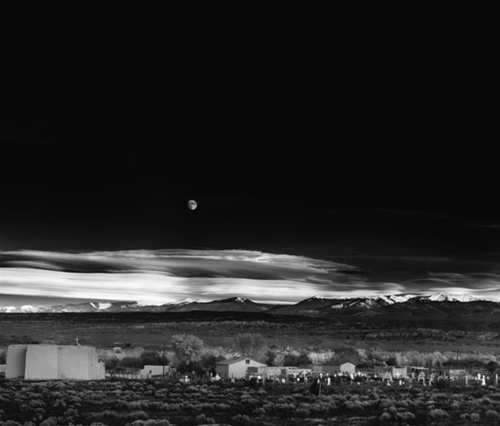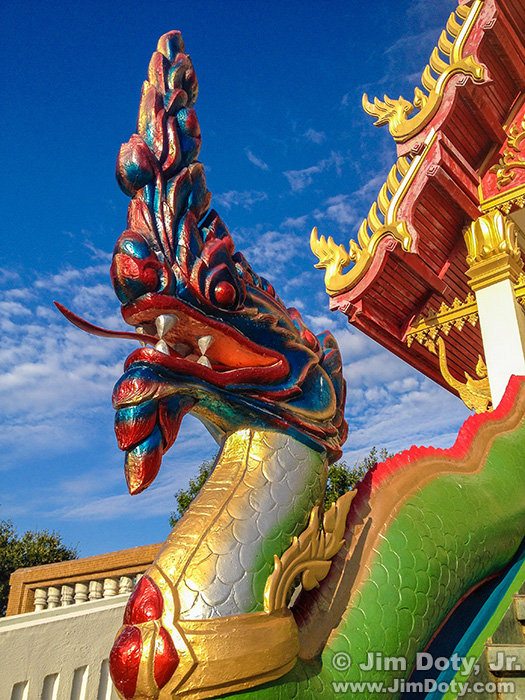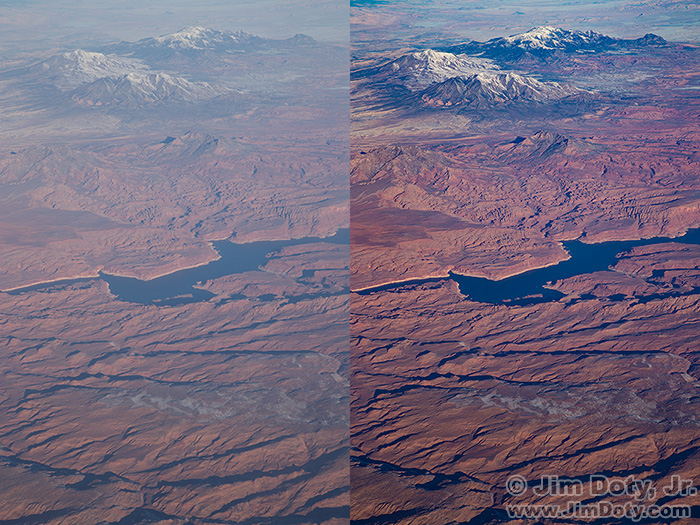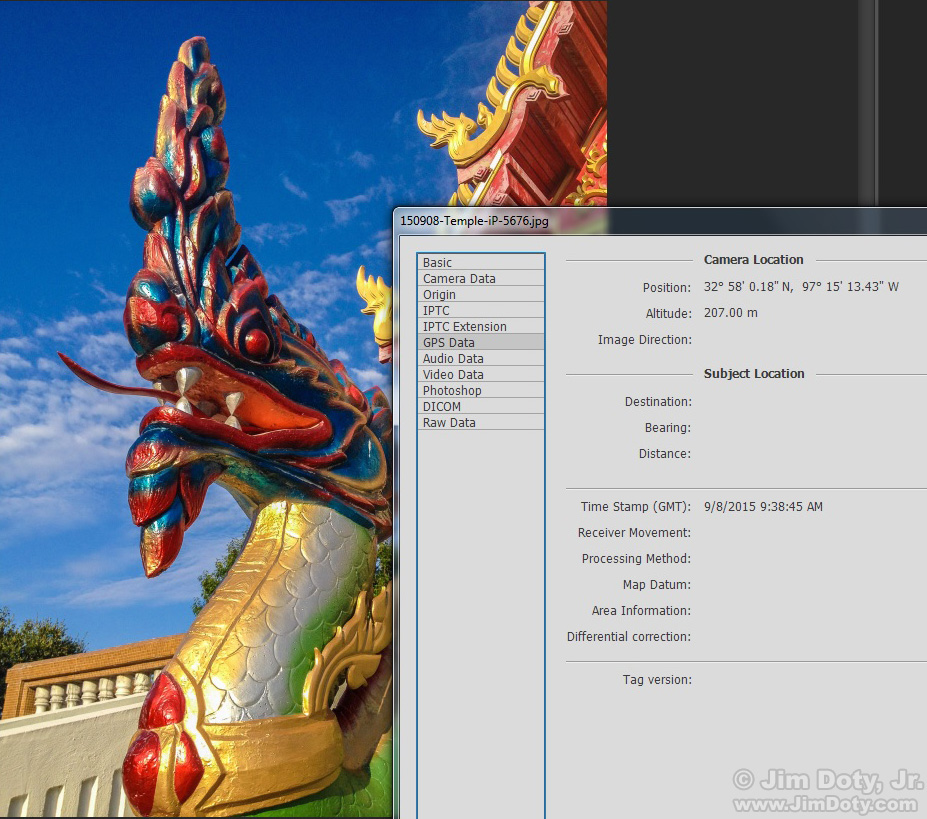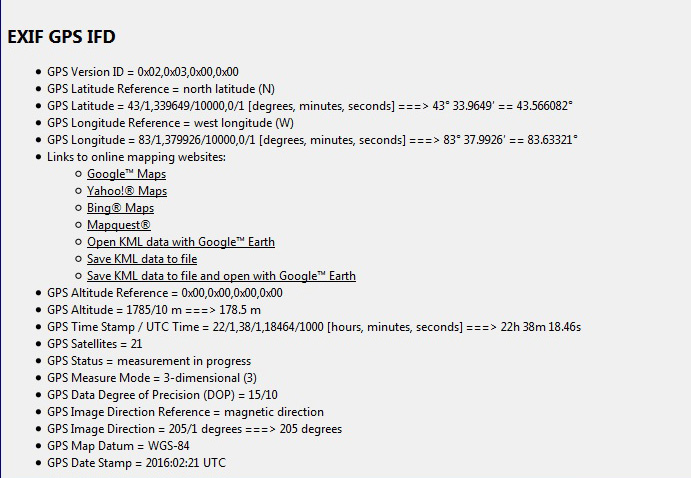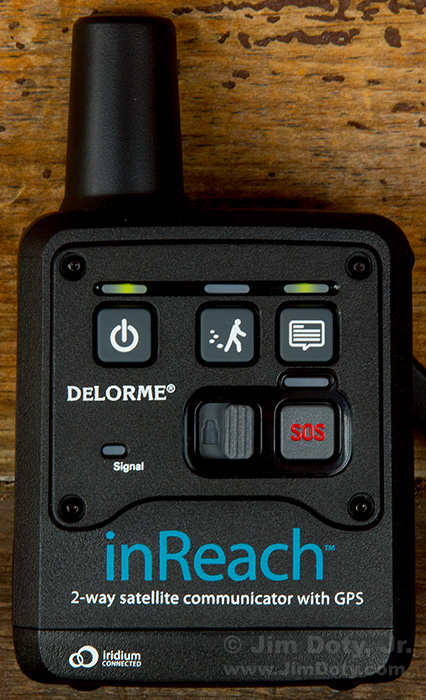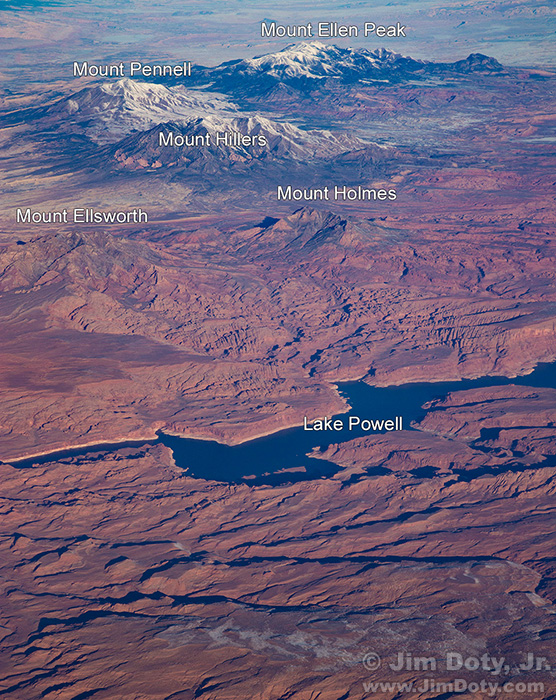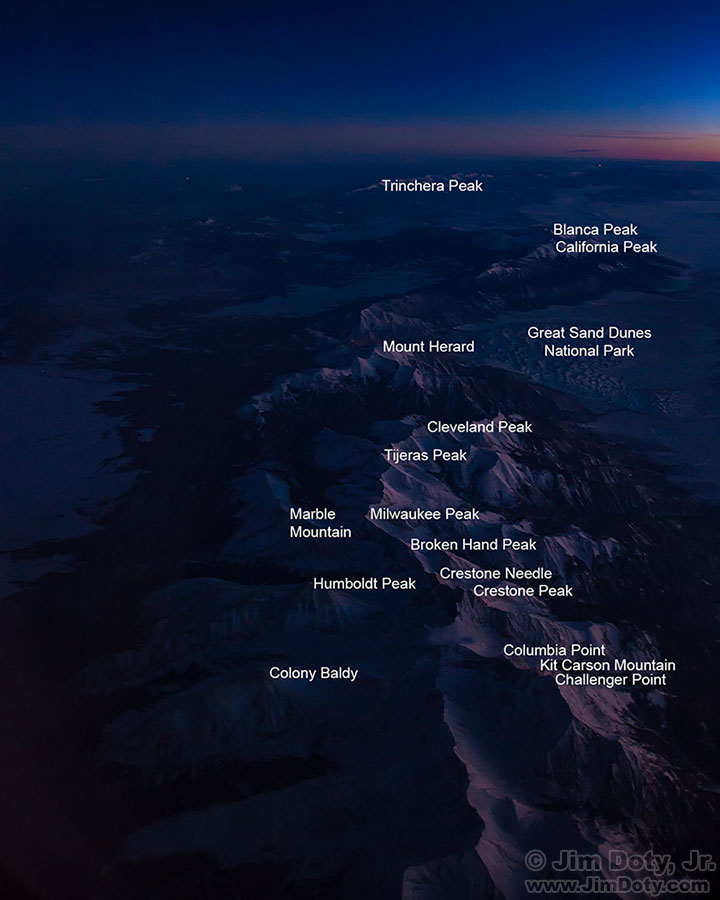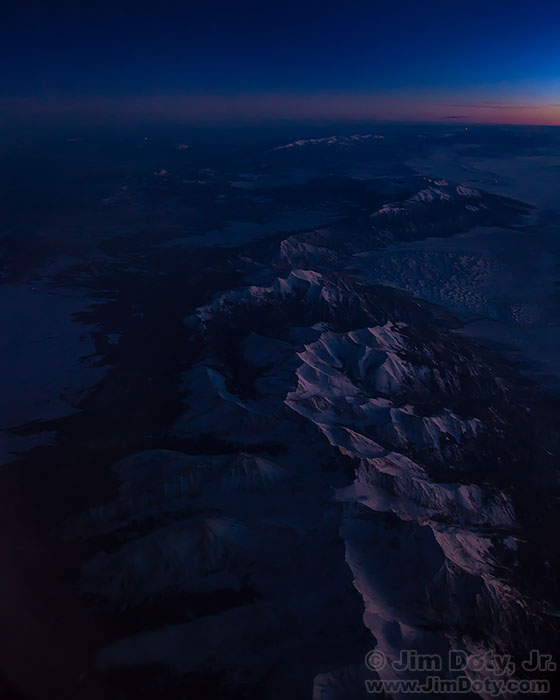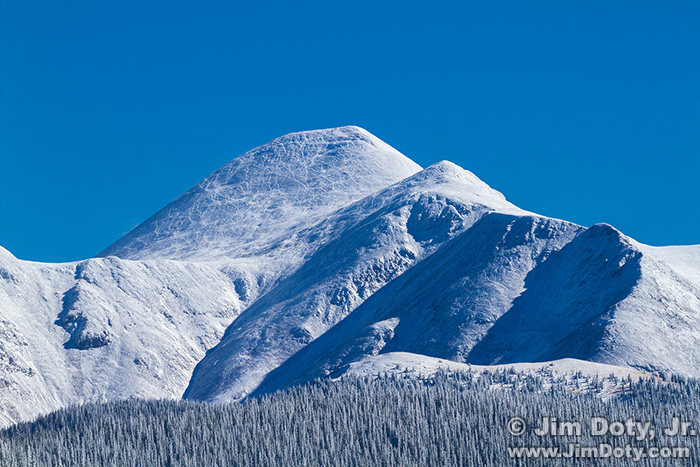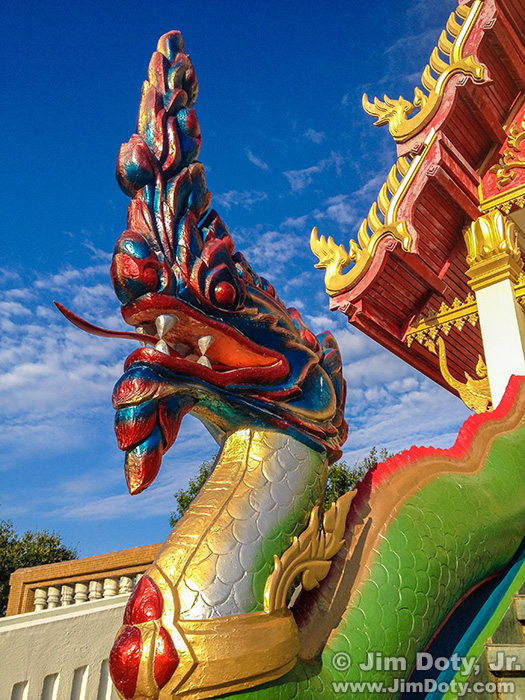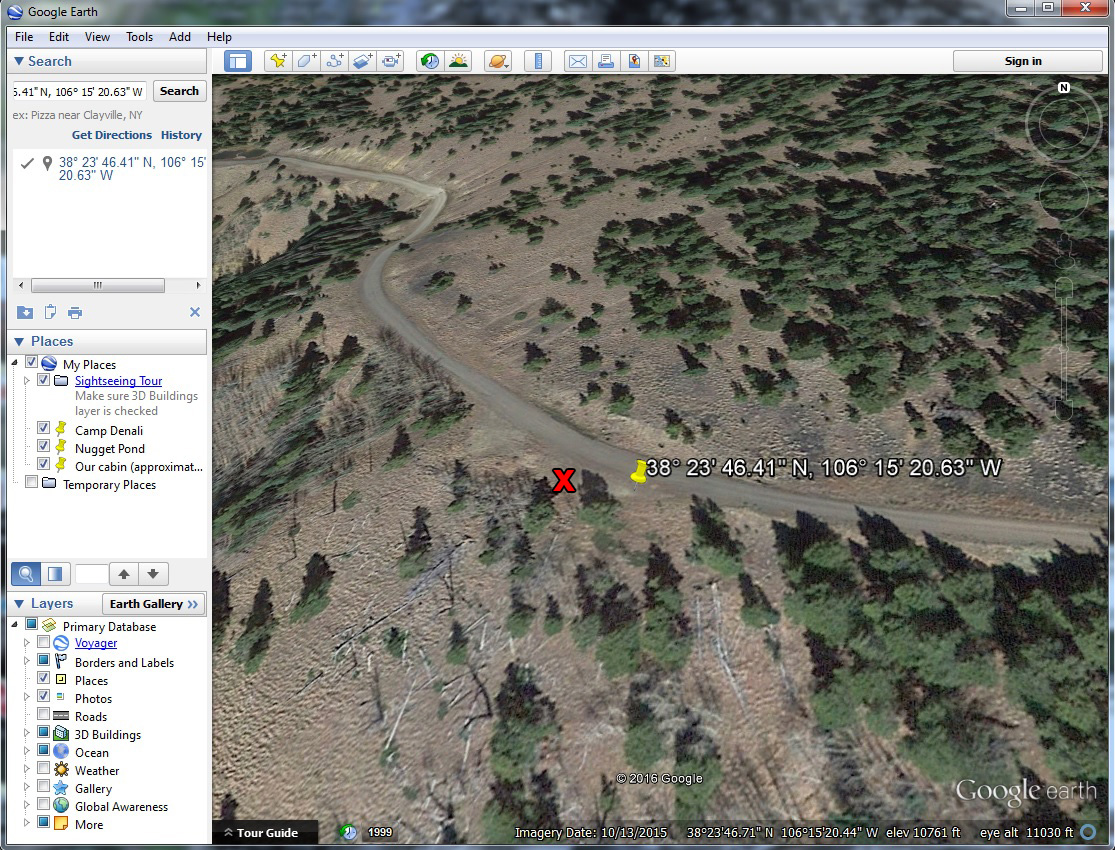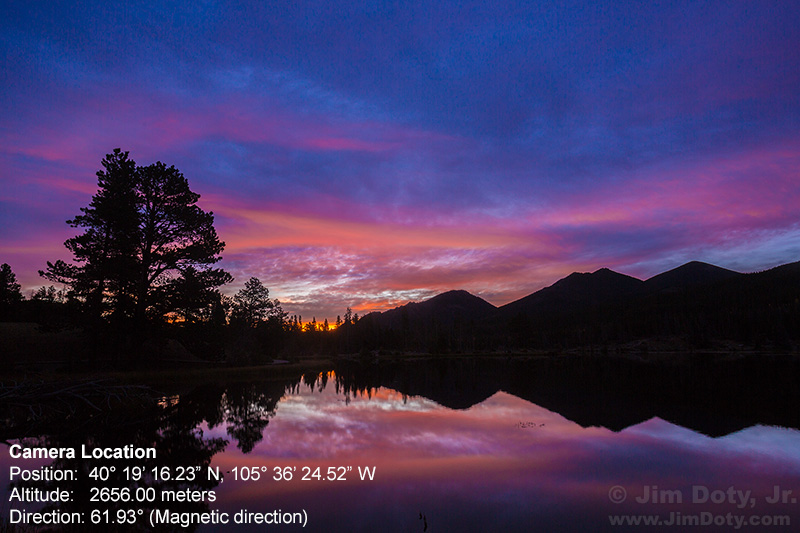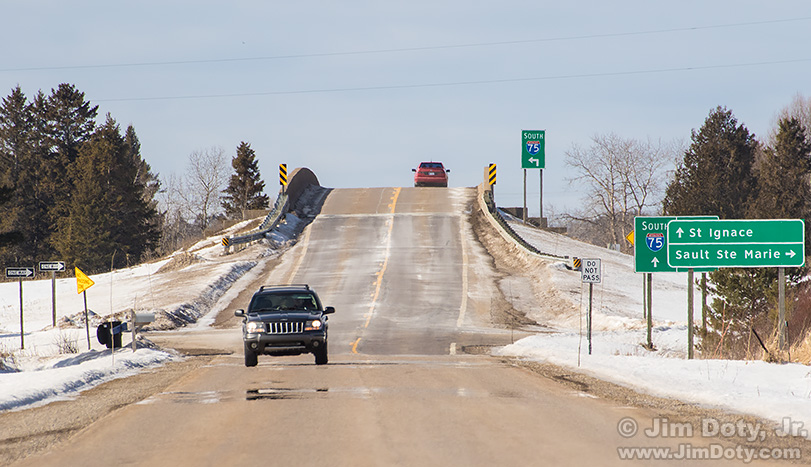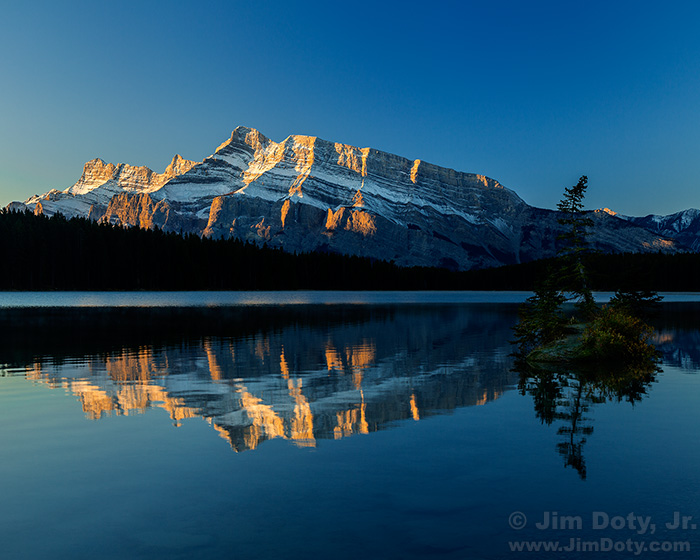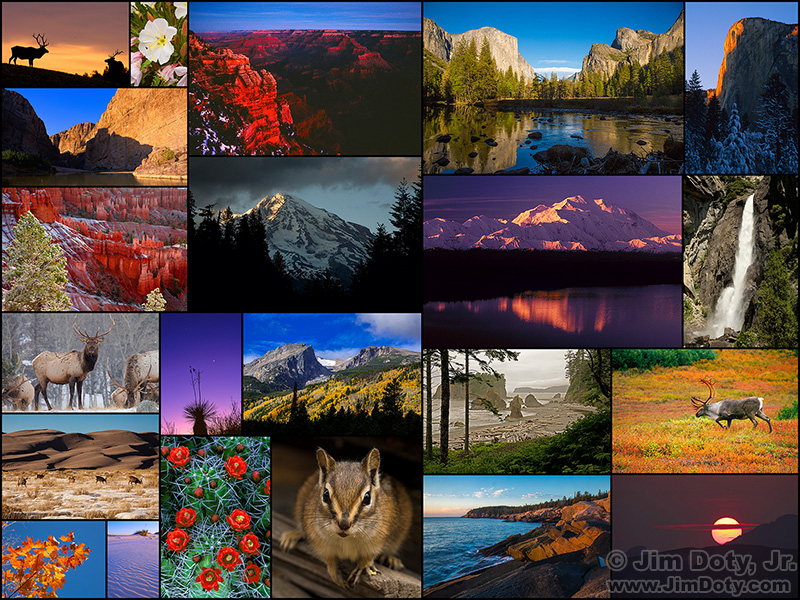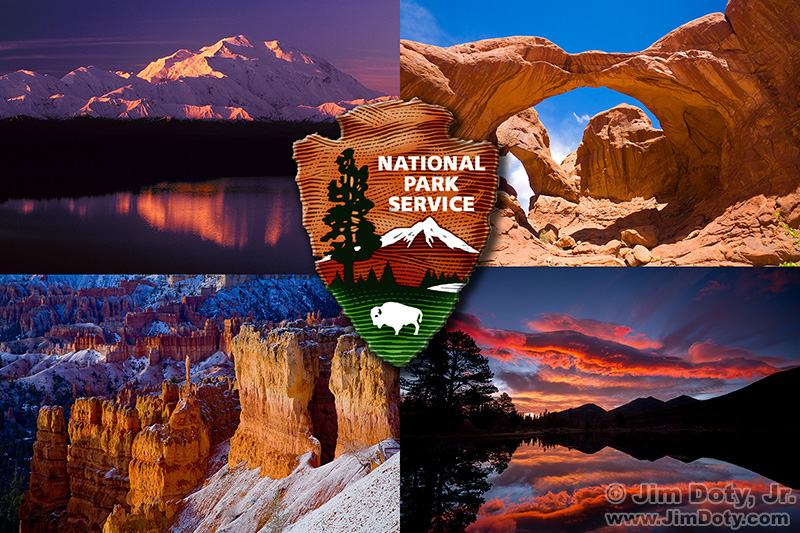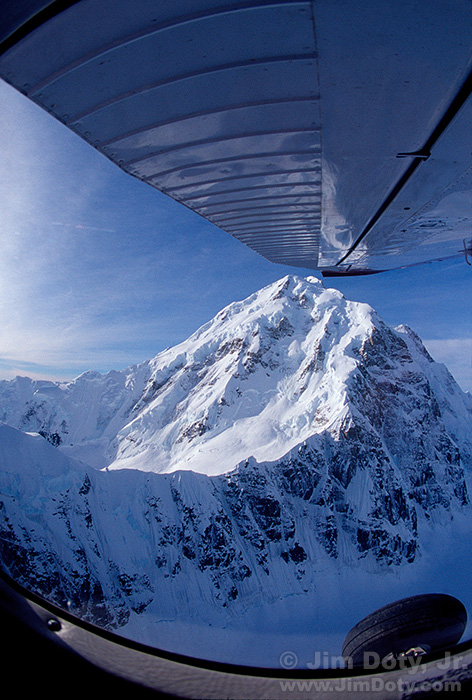Contrast is a matter of personal taste. A classic illustration of this is the way Ansel Adams interpreted his negatives when he made prints, and how that changed over time. Adams often said “The negative is similar to a musician’s score, and the print to the performance of that score.”
Video: Ansel Adams Printing in the Darkroom
THIS VIDEO IS NO LONGER AVAILABLE. I WILL TRY AND FIND IT AT ANOTHER LINK.
A classically trained musician, Ansel Adams thought of his negatives as the score and his work in the darkroom as the performance. He would “interpret” his negatives differently, “dodging” and “burning” during the printing process to create a more dramatic image. In this short video you get to watch the master at work.
Happy Birthday, Ansel Adams!
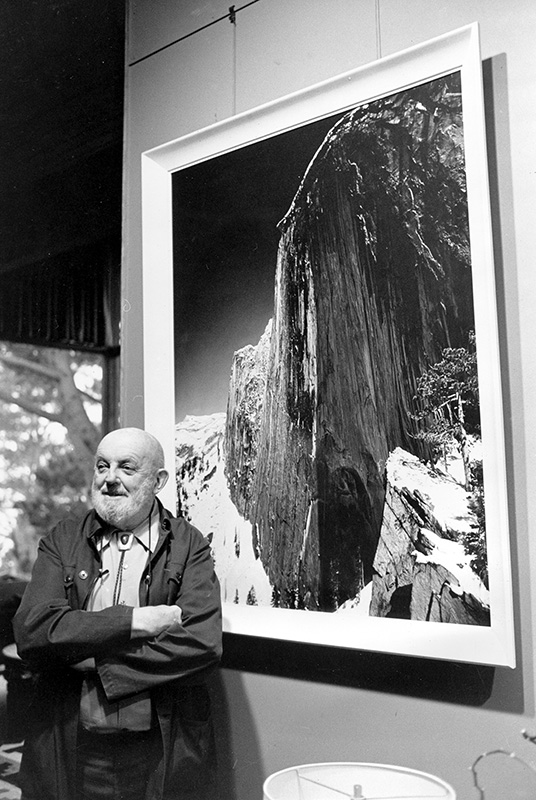
Ansel Adams in front of “Monolith: The Face of Half Dome, 1927”. Photographed in his home Dec. 2, 1980.
Ansel Adams was born February 20, 1902. He is “the” icon of American landscape photography. Trained as a concert pianist, his love of photography and time spent in Yosemite National Park led him to a career change.
Having Fun with Jeffrey Friedl’s Image Metadata Viewer
If you want to look at the metadata embedded in online photos, including GPS coordinates, this is an excellent online viewer. And it is simple. Just grab the URL for an online photo, drop it into the URL box on Jeffrey’s site, verify you aren’t a robot, and then check out the tons of metadata (check out the examples below). This is the most comprehensive metadata viewer I have found.
How to Process Aerial Photos with Your Favorite Image Editing Software
Thanks to atmospheric haze, aerial photos usually don’t look very good right out of the camera. The fastest, simplest, and best way to fix your aerial photos is with Adobe Camera Raw (ACR). If you don’t have ACR there are other good options in your favorite image editing software. They won’t be as fast but they will get the job done. This article shows you how.
How to Correct Exposures with a Levels Adjustment Layer
Levels is a powerful tool and relatively simple to learn. Levels provides a quick, simple, and effective way to correct basic exposure problems. This tutorial will show you how to adjust the exposure of your images with levels.
How to Process Aerial Photos with ACR
Photos from a commercial jet don’t look very good right out of the camera because you are seven miles off the ground. You are usually shooting through seven miles of atmospheric haze, even on a relatively clear day. If you are flying on a hazy day it is going to be even worse. Fortunately, you can save many of your aerial photos with a quick fix in Adobe Camera Raw (ACR).
Originally posted Feb. 12, 2017. Updated Feb. 17, 2017.
“How To” Series: Using GPS in Photography
The GPS system is increasingly important to photography. It will help you figure out where you took some of your more obscure photos and help you caption your photos. More and more photo editors want GPS information for the photos they publish. A GPS communicator could save your life. This series will help you learn the ins and outs of GPS, plus keep you and your family safe.
Originally posted Jan. 29, 2016. Updated and re-posted Feb. 11, 2017. Updated March 18, 2024.
Geotagged Photos: Posting Photos Online Can Put Your Family at Risk
Your smartphone is designed to geotag the locations of your photos and store it in the photo’s “metadata”. Many other cameras do the same thing. This means if you take pictures of your family and post them online, anyone (including some very unsavory characters) can pull up a map of where the photo was taken. Is there really a danger? Yes. Are you at high risk for this happening to you? That is hard to say. Is it better to be safe than sorry? Of course. What can you do to protect your family? Keep reading.
Originally posted August 13, 2013. Revised and updated and re-posted Feb. 11, 2017.
Satellite Communicators: The GPS Messaging Devices That Can Save Your Life
You need help. You can barely move. You are far enough from the trail that no one can hear your voice. You have no cell phone signal. What do you do?
Every now and then you hear tragic stories about people who lose their lives simply because they didn’t have a cell phone signal and couldn’t call for help in an unexpected emergency. A $260 – $340 satellite communicator would have saved their lives.
Originally posted Nov. 10, 2014. Updated and re-posted Feb. 11, 2017.
Geotagging Aerial Photos: The Joys and Frustrations of Using GPS on an Airplane
When I am taking pictures from an airplane I am curious where I am and what I am seeing down below. Sometimes it is obvious, like the Grand Canyon, and sometimes it isn’t. GPS on a plane should help a lot. At least that’s the theory.
How to Photograph Comet 45P
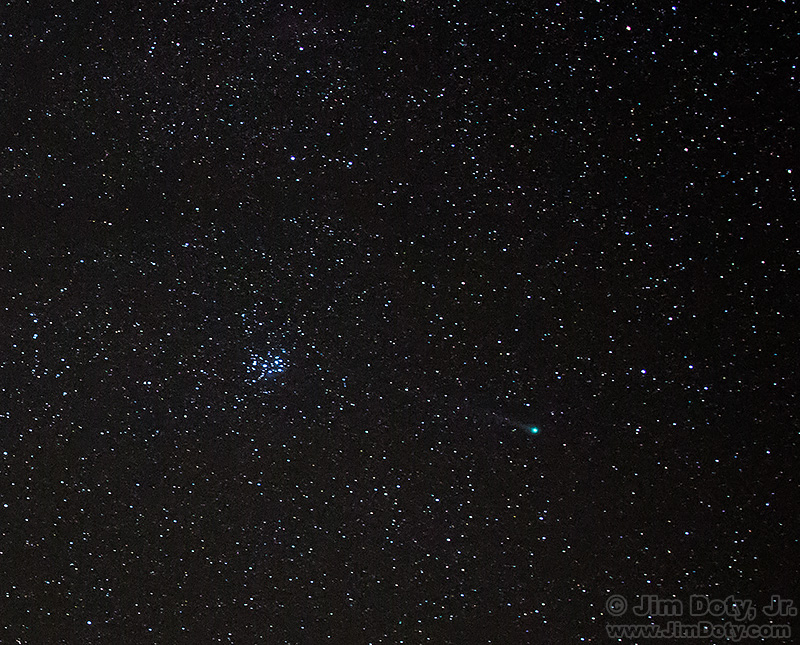
Comet Lovejoy. January 19, 2015. Cropped from a photo taken with a 24mm lens. Click for a larger version.
If you aren’t used to photographing faint objects in the night sky, this will be a challenge, but I suggest you try anyway. You have nothing to lose and a photo to gain.
Originally posted Feb. 9, 2017. Revised and expanded Feb. 10, 2017.
Using Google Earth in 3D Mode to Label Aerial Photos
Your friendly magazine photo editor wants to know if you have an aerial photo of Crestone Peak. Or maybe you are just curious about the stuff you photograph out an airplane window. Looking at a map, a topographic map, or a satellite image is the usual way to identify objects in an aerial photo, but sometimes that doesn’t work very well. That’s where Google Earth in 3D “flyover” mode comes in.
Originally posted Feb. 8, 2017. Updated Feb. 11, 2017.
How to Photograph from a Plane at Dusk (The Sangre de Cristo Mountains)
Everything but time was in my favor. I was able to grab a good window seat (well ahead of the engines) with a clean, un-crazed window on the correct (right) side of the plane to photograph the Sange de Cristo Mountains.
How To Get GPS Coordinates Into Google Earth
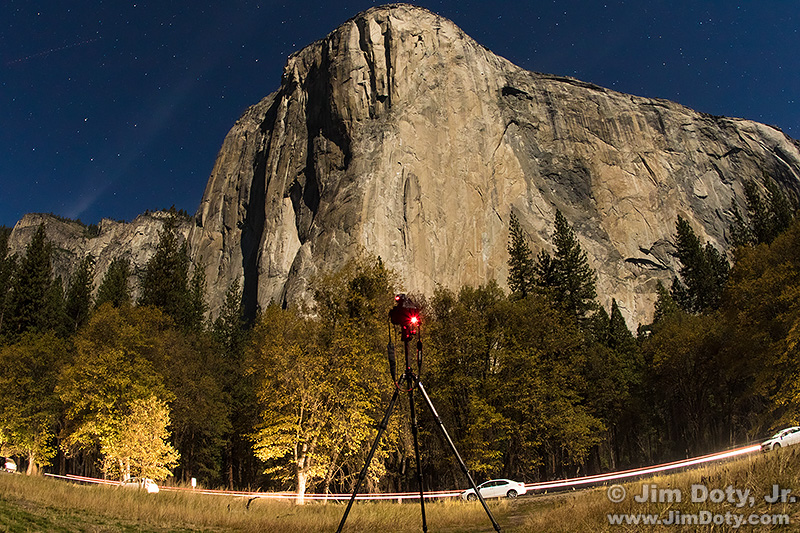
El Capitan in the moonlight along with a camera and tripod. El Capitan Meadow, Yosemite National Park, California.
GPS Data is increasingly important to photographers. It is the link between photos and photographic locations. It can be very helpful to drop GPS coordinates into a program like Google Earth to be able to tell exactly where a photo was taken. How do you do that?
Originally Feb. 9, 2016. Updated and re-posted Feb. 5, 2017.
Using Google Earth to Find the Name of a Mountain (and How to Get GPS Info into Google Earth)
What is the name of this mountain? Photo editors want to know. They like caption information. If you have a distinctive mountain in your photo, “Mountain in Colorado” won’t cut it with your friendly neighborhood photo editor. Here’s how to identify that mountain in Google Earth (and how to get GPS coordinates into Google Earth).
Originally posted Jan. 26, 2016. Updated and re-posted Feb. 5, 2017.
Checking the GPS Location Accuracy of Your Camera, Part Two
The fastest way to check location accuracy your camera’s GPS information is to take a photo at a known location that you can pinpoint on a map.
Posted Jan. 28, 2016. Updated and re-posted Feb. 3, 2017.
Checking the GPS Location Accuracy of Your Camera, Part One
In a prior article (on figuring out the name for Antora Peak) I noted the discrepancy between the GPS coordinates provided by my iPhone and the actual location where I took the photo (graphic above). They were off by about 20-30 feet. You can test the accuracy of the GPS information provided by your camera/smartphone. This article will show you how.
Originally posted Jan. 28, 2016. Updated and re-posted Feb. 3, 2017.
The Why and How of Adding GPS Information To Your Photos
Should you join the growing number of photographers who “geotag” their photos (add GPS data). How do you do it? Are there times you shouldn’t?
Originally posted Jan. 28, 2016. Revised and re-posted Feb. 2, 2017.
Comparing the GPS Accuracy of Three Cameras
I was on S. Hantz Road east of Rudyard, Michigan looking for Snowy Owls. According to eBird there had been several recent Snowy Owl sightings in the area, but no owl was to be found the day I was there. Another photographer I met didn’t have any luck either. I had three GPS enabled cameras with me, counting my phone, so with no owls in sight I decided to compare the accuracy of the GPS units.
Originally posted Jan. 31, 2017. Revised and expanded Feb. 19, 2017.
“Where Were You When You Took Those Photos?”
Today (Mar 18, 2014) I was asked by a client where I was when I took some photos in Banff National Park. I was able to provide him with the exact locations, complete with marked satellite images. It is a good idea to known where you were when you created your most important images, and the more specific the information the better. It is good info to have for your own use and sometimes it can make the difference between whether or not one of your images is published.
Originally posted Mar. 18, 2014. Updated and re-posted Jan. 30, 2017.
Adobe Bridge Freezes Up? Try This!
I had a serious problem with Adobe Bridge freezing on start up. It was totally unresponsive on my MacBook Air. The only way I could close Bridge to remove it from hiding my desktop was to hold down the power button until my laptop shut down.
The National Park Series: Where to Go and When
The national parks in the U.S. and Canada are natural, environmental, and photographic treasures. They are high on the list of preferred destinations for professional and amateur photographers alike. To help you show up at right places at the best times to create beautiful images, I put together this ongoing series of articles.
Posted January 22, 2017. Most recent update: June 6, 2025. Continue reading
When is the Best Time of Year to Photograph Each of Our National Parks?
Planning a trip to photograph some of our national parks? You will get better images if you visit a national park at its prime season of the year. But when is each park at its very best? And how about great locations that aren’t in the national parks? This article has answers.
Posted January 18, 2017. Updated February 10, 2018.
The Chinese Lens Rip Off! Part Four
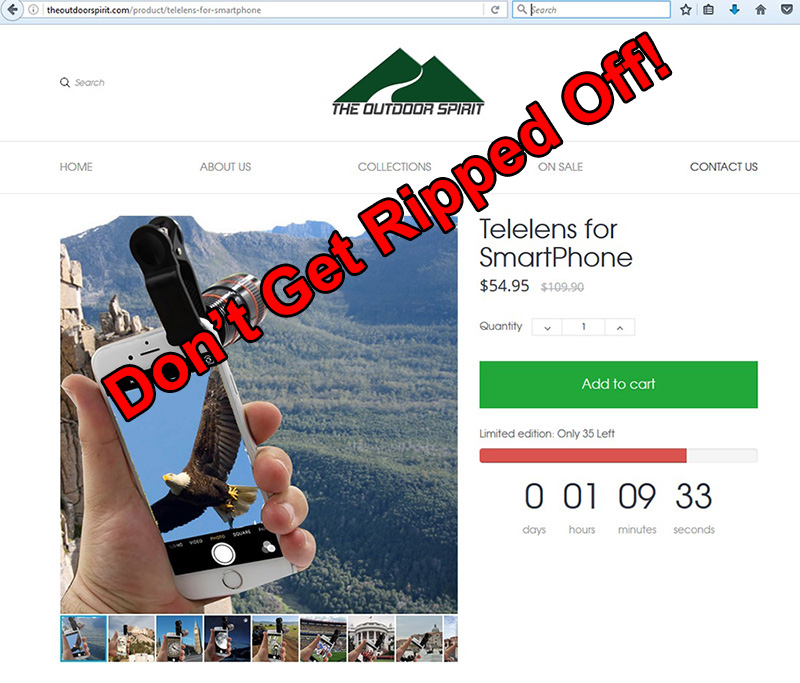 We’ve been down this road before. The formula is simple. Take a cheap smart phone telephoto lens you can buy at Amazon for $15, sell it for $54.95, say it is a limited half price offer, and imply the lens will do amazing things that every well informed photographer knows the cheap lens absolutely can’t do.
We’ve been down this road before. The formula is simple. Take a cheap smart phone telephoto lens you can buy at Amazon for $15, sell it for $54.95, say it is a limited half price offer, and imply the lens will do amazing things that every well informed photographer knows the cheap lens absolutely can’t do.
Posted Jan. 8, 2017. Expanded Dec. 2, 2017.
One Photographer and Nine Outdoor/Travel Writers Pick the Best Winter National Parks
I am planning a winter photography trip to some U.S. national parks, some of which I haven’t been to before. So I am narrowing down my choices to fit the time I have. My search is what led to the advice in this article. I recommend you also read The Best National Parks to Photograph in Winter.
Posted January 17, 2017. Updated Jan. 3, 2018.
The Best National Parks to Photograph in Winter
Winter provides some wonderful photo opportunities in our national parks. So if you haven’t gone into hibernation for the winter, here are the best national parks to go photograph this winter, grouped by state from the west to the east. There are a few bonus locations thrown in too. At the end I give you my “best of the best” list.
Posted Jan. 17, 2017. Updated Jan. 3, 2018.
Winter Photography Safety Essentials
I grew up in Colorado where strange weather can strand you in any month of the year. Even though it is rare, I’ve seen blizzards in the high country in July. So I learned to carry some safety essentials when doing winter photography in remote locations. You never know when you might be stranded for several hours, a whole day, or longer, until the blizzard abates and someone can come find you. This is what I carry in my car pretty much year around but especially in the winter. I include a few winter travel tips, too.
Exposure Warning: Turn On The Blinkies
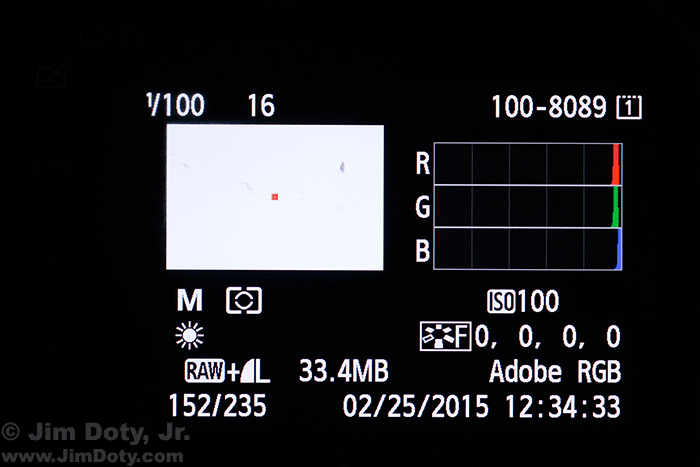
Camera LCD Display With The Blinkies Turned On. Washed out pixels in the photo are flashing white and black.
Some camera’s come with a highlight overexposure warning, commonly called “the blinkies”. If you have overexposed, blown out pixels, those pixels in your image will flash white and black. A quick look at the LCD image will tell you if part of your image has white, washed out, featureless pixels. If your camera has a highlight overexposure warning, I suggest you turn it on. If you see the blinkies and you don’t want washed out pixels, tone down your exposure until the blinkies go away.
Martin Luther King, “I have a dream . . .”
The full seventeen minute speech is here.

